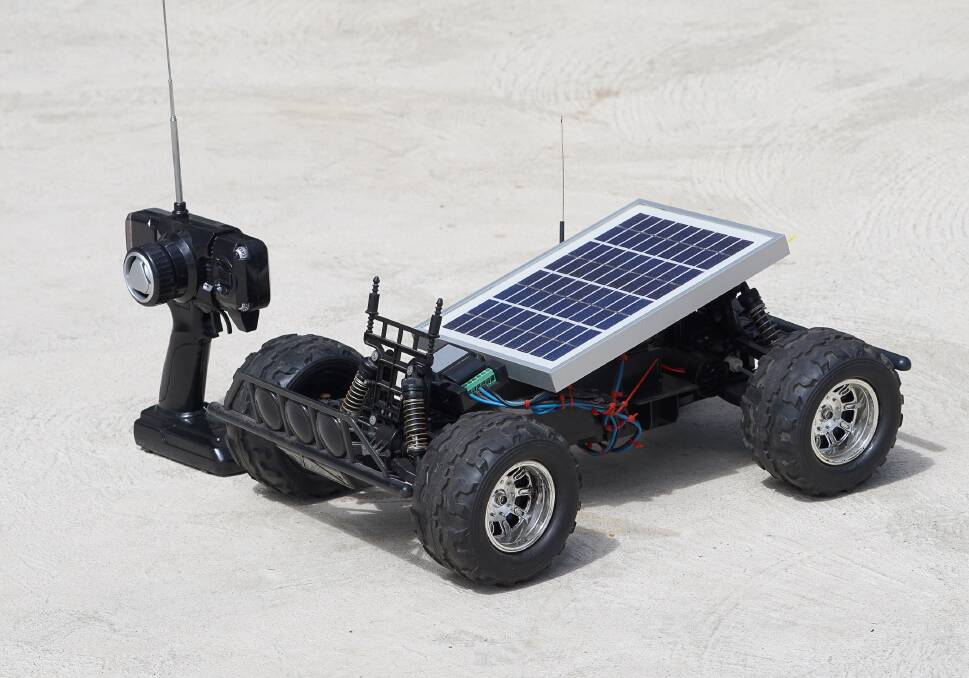
The idea of a solar-powered car has appeared many times, and from many minds. In fact it's such an obvious concept that primary school children suggest it.
The first solar-powered car prototype appeared in 1955, which was not long after the first practical photovoltaic cell was publicly demonstrated at Bell Laboratories in 1954.
It was created by William G. Cobb who worked for General Motors at the time, and it was just a 15 inch model with 12 selenium photovoltaic cells and a small electric motor. It worked, but needed to be scaled up.
The World Solar Challenge has been running the 3022km from Darwin to Adelaide every two years since 1987 (with the exception of 2021 for obvious reasons). Purpose-made vehicles built by teams from around the world carry their drivers the distance using nothing but the energy they have been able to harness from the sun (and starting with a charged on-board battery pack).
So if the concept has been around for decades then why don't we have solar powered cars on our roads already?
Well, it could be argued that it's a fairly simple case of maths.
You can only fit so much in the way of solar cells on the surface of the vehicle. And those cells with current silicon technology are only so efficient (and there's noticeable variance there between suppliers).
The amount of energy that can be harnessed even by the most dense solar cells is nowhere near enough to directly power a typical road car. In fact you'd do well to power something slow and utilitarian, and as light as a World Solar Challenge car such as a buggy, golf cart or tuk tuk (rickshaw).
In fact, some content creators have welded some steel tubes together, fitted overpowered (1kW) e-bike hub-driven wheels, a canopy made of solar panels, and called it a solar-powered car. They're not. They're nowhere near the level of crash safety required, and no better than a bike in the rain, but they are potentially useful as a buggy in the same way that golf carts aren't just for carting people and stuff on a golf course.
For actual and practical road use however, when used for the purpose of a range extender (in the same way that regenerative braking is used as a range extender), it appears that solar does work on a passenger car. In fact, for many people it could be argued that a solar-powered commuter vehicle need never (or almost never) be plugged in to recharge its onboard battery pack.
This is the philosophy that more than one new company has embraced in their marketing, having added enough charging capacity from solar cells to their prototypes to extend the range further than the typical commute in many parts of the developed world. And for those of you who drive further (whether that's regularly, or as a one-off) it still means recharging less often.
In addition to the car maker incorporating the best solar cells they can, extreme efficiency is also the name of the game. That means a design that is as light as possible, slips through the air as easily as possible, and gives the driver the tools (displays) needed to help them drive efficiently as well.
One example is the Lightyear 0. Due to be delivered to customers in late 2022, it is very expensive but it's also a fundraiser to help them make affordable cars that will also be supplemented by the sun. And to put a number on that supplement, depending on where you live, they claim that on a long sunny day you could gain an additional 70km of range from the solar. It also has a 60kWh battery and even without the solar it has a standardised WLTP test range of 625km, and a highway (110km/h) range of 560km.
A more ambitious example is Aptera Motors. This company was revived in 2019, with its creators having liquidated the first effort of this name in 2011 (after founding it in 2005).
Building on the concepts they developed originally, they have redesigned the small hatchback to be a bit more like one of the World Solar Challenge designs. It's not as low or long, but it looks very futuristic for want of a better word. Most of their proposed models are three-wheelers with the single wheel at the back (for better stability). They claim a range of 1600km when fully charged, and up to 64km on a sunny day just from the solar.

